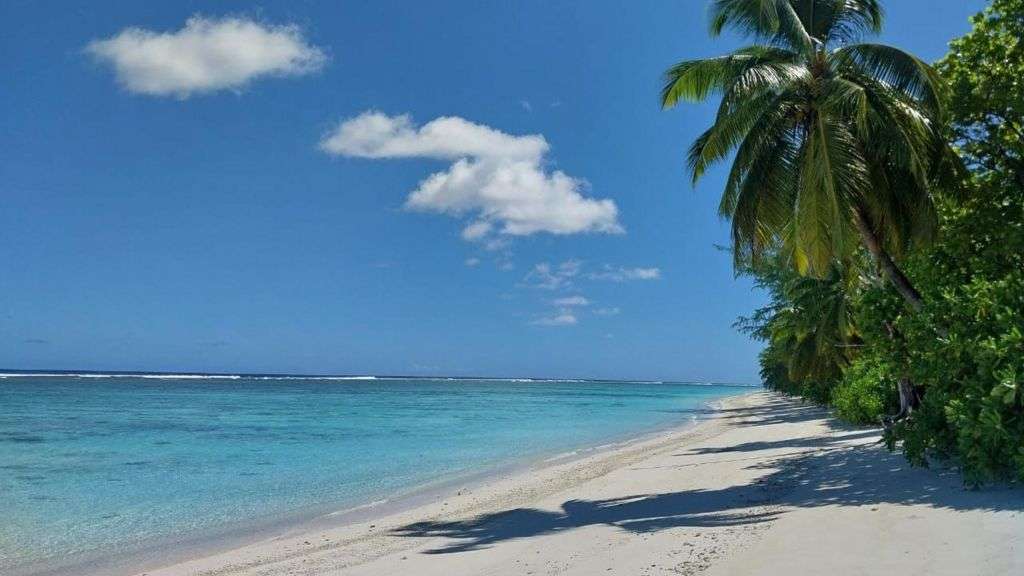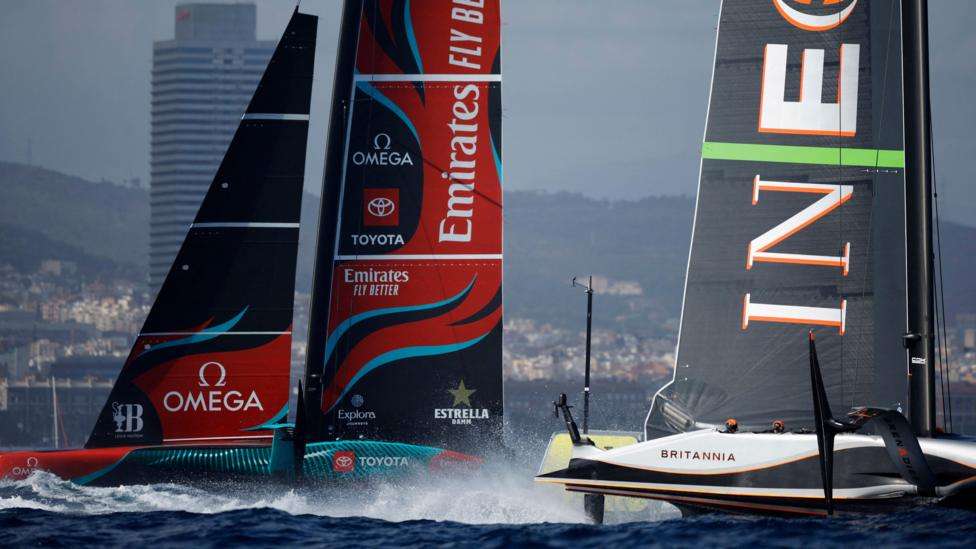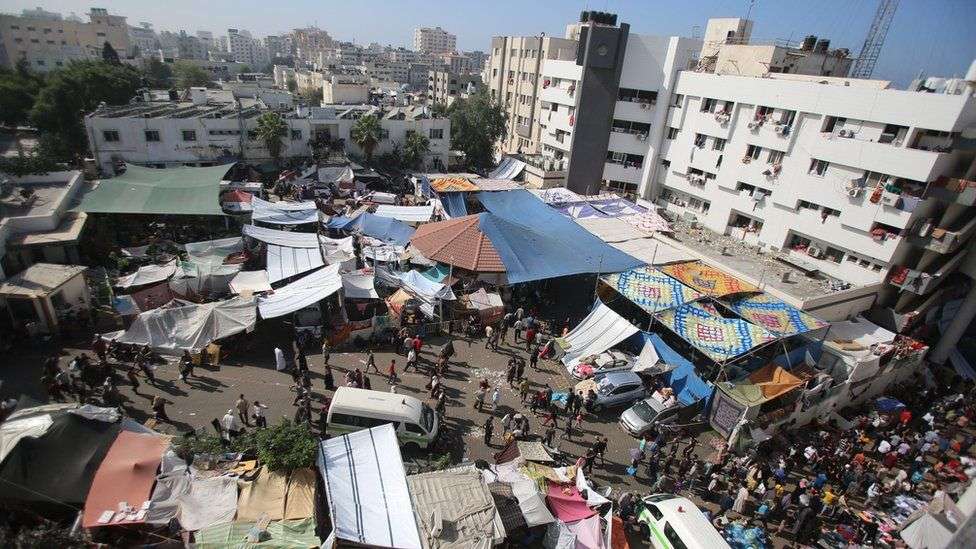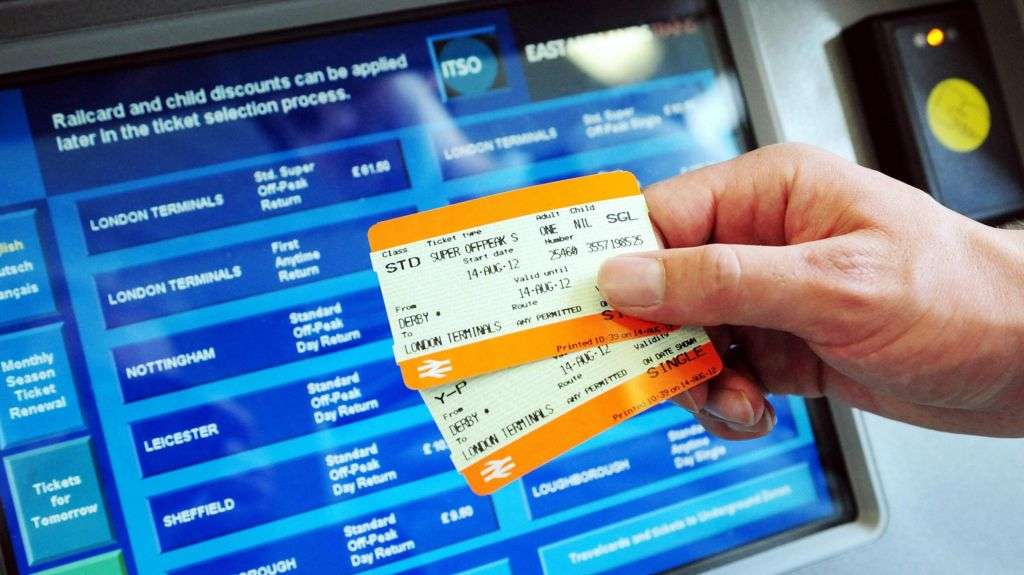Arnaud Poulay never wanted to leave the tiny Indian Ocean island of Agalega, but this year he packed his bag and took off, broken-hearted by what he regards as the militarisation of his home.
Until recently, just 350 people lived on Agalega, fishing and growing coconuts. Other food was delivered four times a year by ship from the capital of Mauritius, 1,100km (680 miles) to the south. A small airstrip was rarely used except in medical emergencies.
But in 2015, Mauritius, an island nation of which Agalega is a part, signed a deal enabling India to build a vast 3,000m runway and a big new jetty there, as part of the two countries' deepening collaboration on maritime security.
However some Agalegans fear this could grow into a fully-fledged military presence.
Mr Poulay, a 44-year-old handyman and reggae musician, led a campaign against the project.
“I love my island and my island loves me,” he says. “But when that base was unveiled, I knew I had to leave.”
Agalega - two small islands covering 25 sq km, in the south-west Indian Ocean – would be an ideal location for India to monitor marine traffic. And a comparison of satellite images from 2019 with others taken in July this year shows how much has changed.
A carpet of palm trees has made way for the runway, which stretches along the spine of the north island between the two main villages - La Fourche in the north and Vingt-Cinq further south.
Two 60m-wide buildings can be seen sitting on a tarmac apron, at least one of which could be a hangar to accommodate the Indian navy’s P-8I aircraft, according to Samuel Bashfield, a PhD scholar at the Australian National University.
The P-8I is a Boeing 737 modified to hunt and potentially attack submarines, and to monitor maritime communications. Islanders have already photographed the aircraft on the airstrip.
To the north-west is the new jetty jutting out into the ocean, which Mr Bashfield says could be used by Indian surface patrol vessels, as well as the ship that brings supplies to Agalega.
“As newer satellite images become available, we’ll better understand Agalega’s role in Indian Ocean communications,” he says.
The International Institute for Strategic Studies refers to the facility as a “surveillance station” and says it is likely to contain a coastal radar surveillance system similar to Indian-built equipment elsewhere in Mauritius.
The Indian government declined to answer questions about Agalega, and referred the OceanNewsUK to earlier statements on its website. In one of these, Prime Minister Narendra Modi said India and Mauritius were "natural partners" in maritime security, facing traditional and non-traditional challenges in the Indian Ocean region.
The two countries have had a close defence relationship since the 1970s. The country’s national security adviser, its coastguard chief and the head of the police helicopter squadron are all Indian nationals and officers in India's external intelligence agency, navy and air force, respectively.
Both sides would want the facility to be seen “as one that is more about capacity building than for any overt military use”, says Prof Harsh Pant, of the India Institute at King’s College London.
It’s no secret, though, that India and its Western allies are concerned about China’s increasing presence in the Indian Ocean.
While it’s not unusual for a large country to establish a military outpost on the territory of a smaller ally, the construction work on Agalega has troubled some islanders.
A number of areas, including some of the island’s palm-fringed white-sand beaches, have already been cordoned off, islanders say. There are also persistent rumours that the village of La Fourche will be swallowed by the Indian infrastructure that has grown up around it, and that the 10 families who live there will be forced out.
"It will become a restricted area completely for Indians," says Laval Soopramanien, president of the Association of Friends of Agalega.
He fears that “Agalega will become the story of the Chagos islands" - a concern echoed by 26-year-old handyman Billy Henri, who is the son of an Agalegan and a woman expelled from the Chagos islands.
"My mother [lost] her island," says Mr Henri. "My father will be the next."
A number of Agalega’s residents are from families scarred by eviction from the Chagos Islands, 2,000km to the east, after the UK government declared them in 1965 to be British territory and granted the US permission to build a communications station on the largest island, Diego Garcia. This gradually became a fully-fledged military base.
Billy Henri fears that the Mauritius government, which owns all land on Agalega and is the only employer, is trying to make conditions so miserable that everyone will leave.
He points to problems with healthcare and education, limited investment in the local economy, a lack of job opportunities, and a ban on local people opening their own businesses.
A Mauritius government spokesman told the OceanNewsUK that no-one would be asked to leave, and that local people were only prevented from entering the airport and the port – facilities that he said would help the country control piracy, drug-trafficking and unregulated fishing.
Mauritius also denies suggestions that Agalega hosts a military base, saying that the national police are still in full control. However, it acknowledges that India will assist in the “maintenance and operation” of the new facilities, which were built at Indian expense.
The Mauritius and Indian governments say the improvements to sea and air transportation were designed to benefit the islanders and help lift them out of poverty. But local people say this hasn’t happened: there are still only four ferries to the main island of Mauritius every year, and no passenger flights.
Agalegans say they are barred from a new Indian-built hospital, even though a Mauritius government press release vaunted its operating theatres, X-ray machines and dentistry equipment.
Billy Henri says that a boy suffering from cooking oil burns, who needed more help than he could get from the north island’s health centre, was refused entry in October.
"It's only for Indians!" he says.
The injured boy and his parents were flown to the main island of Mauritius instead. Laval Soopramanien says the boy is still in hospital there, and that the family will remain on the main island until the next boat leaves for Agalega.
The Mauritius government did not respond, when asked to comment on the plight of the boy with burns. The Indian government declined to comment.
In a recent speech to the Mauritius parliament, Prime Minister Pravind Jugnauth said the socio-economic development of Agalega was higher than ever on his government’s agenda.
A “master plan” had been drawn up to improve health and education, transport connections and recreational facilities for the island’s residents, and to develop the fishing sector and the exploitation of coconut by-products, he said.
But distrust is fuelled by the fact that neither India nor Mauritius has published the details of the 2015 memorandum of understanding, so their plans for the future are unknown.








